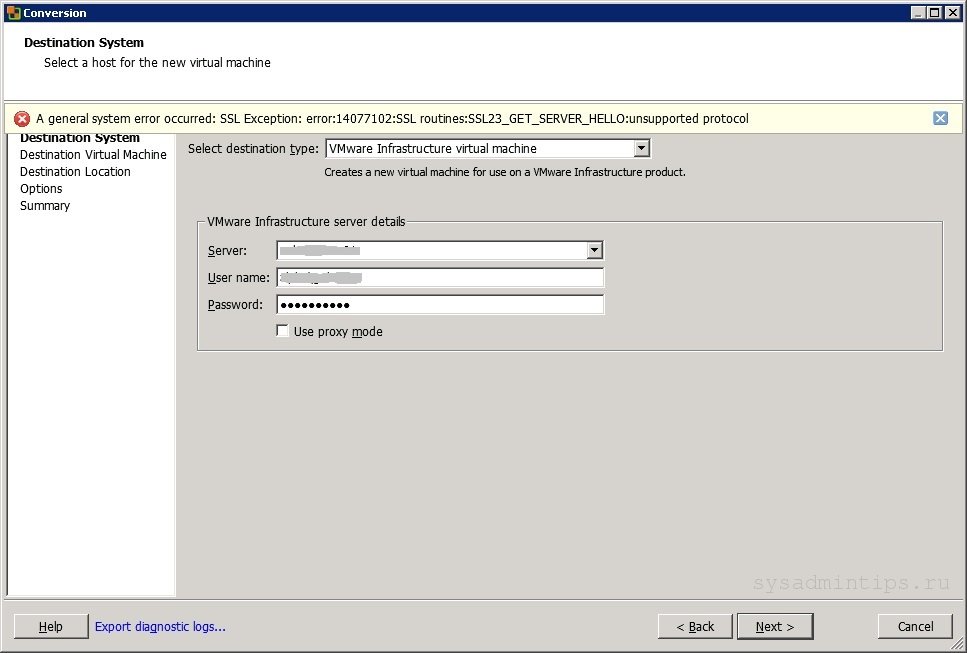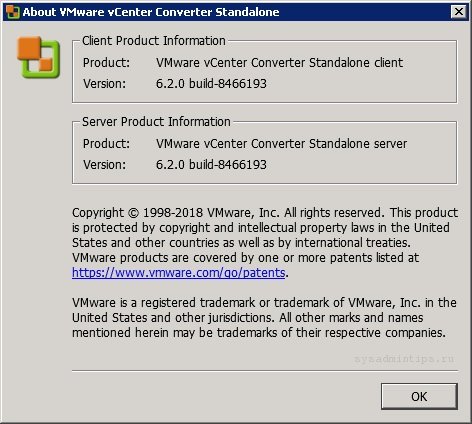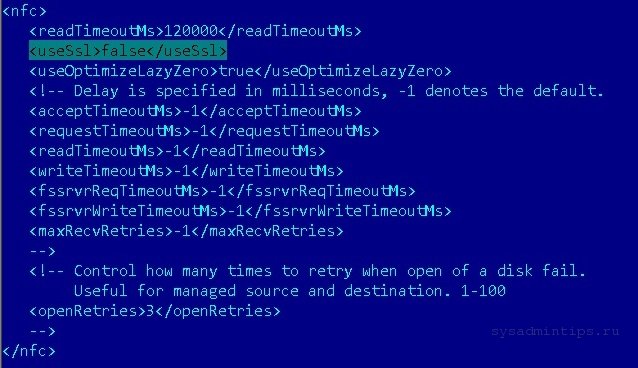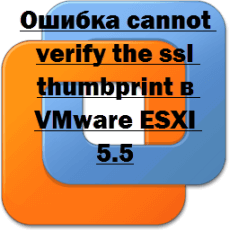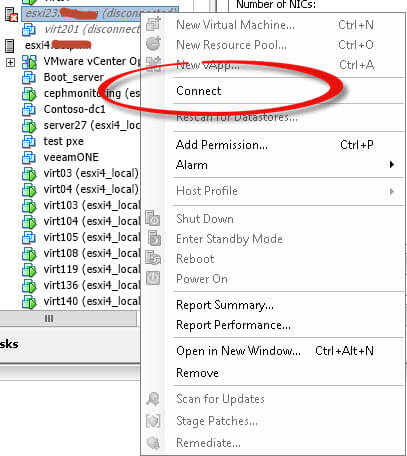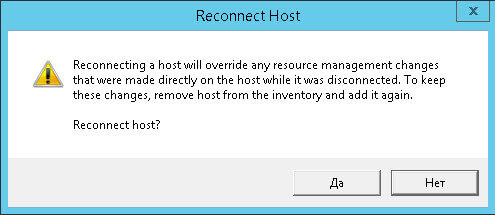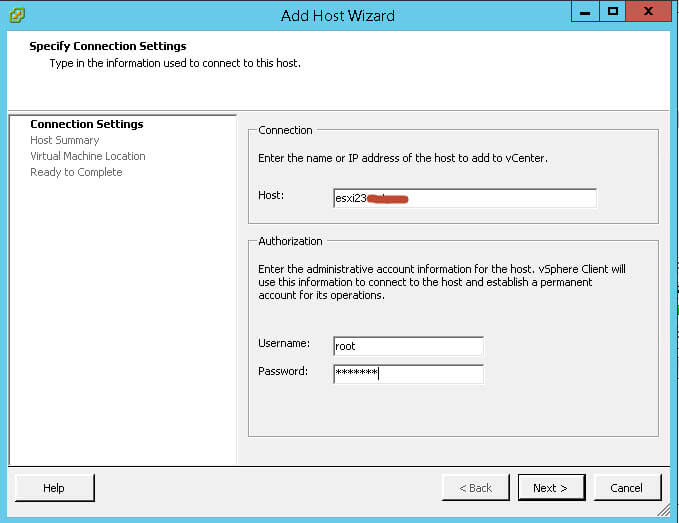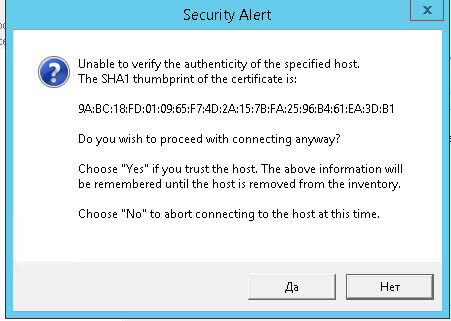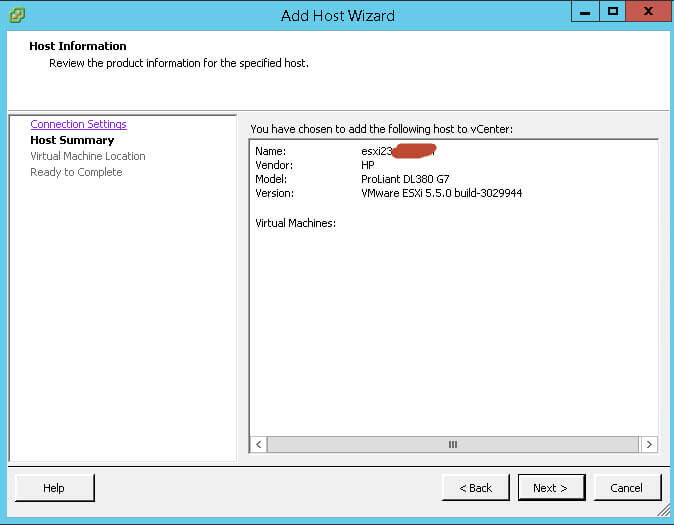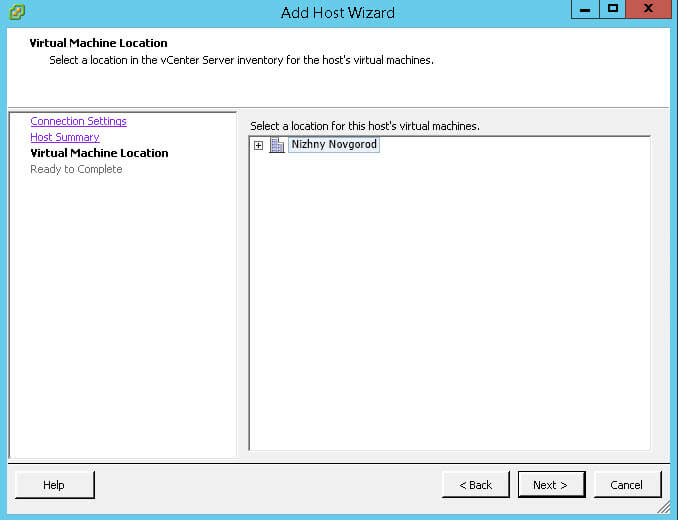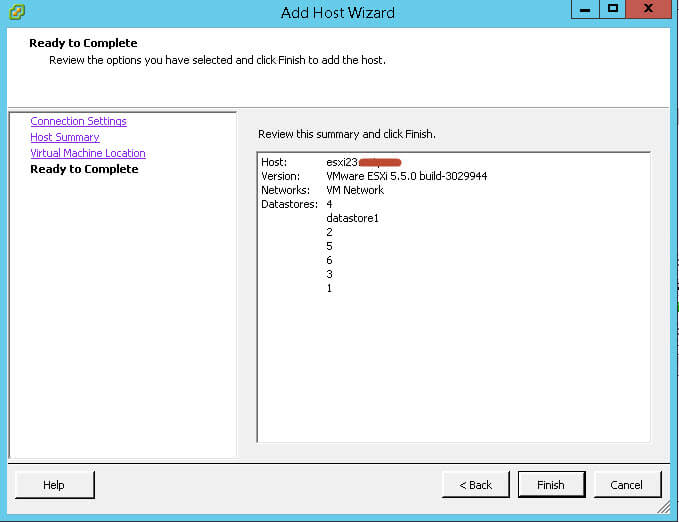Здравствуйте!
Пытался установить VMWare workstation 15.5 в Windows 10, но вылетает ошибка: «The setup failed to generate the SSL keys necessary to run VMware Server». В интернетах советуют переименовать файл openssl.exe в openssl.exe-org, но у меня WSL Ubuntu 18.04 стоит, и VMWare видимо оттуда тянет OpenSSL. Как мне в таком случае установить VMWare и как решить проблемы?! Помогите, пожалуйста!
старый установщик
новый установщик
-
Вопрос заданболее трёх лет назад
-
19093 просмотра
Пригласить эксперта
сначала отсюда или отсюда берете openssl.exe, кидаете в system32, затем запускаете установщик VMWare.
} VMWare workstation 15.5 в Windows 10
Предполагаю, что следующим вопросом будет «как отключить Hyper-V»,
Device Guard / Creditional Guard
М.б. удастся «уйти» на «связку» Hyper-V и совместимое ПО ( используется API WHPX ( Windows Hypervisor Platform )
— WSL2
— VirtualBox 6.0.X ( 6.1.X пока на стадии Beta1)
— эмуляторы Android
— QEMU
?
P.S. На всякий случай, привожу «чем всё завершилось» :
Автор вопроса say: }} vvmtutby, всё оказалось в том, что OpenSSL не может быть запущен из-за отсутствия необходимых системных библиотек, одна из которых libeay32.dll .
-
Показать ещё
Загружается…
04 июн. 2023, в 15:02
2000 руб./за проект
04 июн. 2023, в 14:16
1500 руб./за проект
04 июн. 2023, в 12:23
30000 руб./за проект
Минуточку внимания

The problem that all this generated for me in my lab was:
- Not being able to see anything in the Update Manager
- Not being able to see, edit, or do anything in the Storage Policies
- Skyline Center wouldn’t load, wouldn’t display anything
- Skyline Center wouldn’t load, wouldn’t display anything
I had really messed it up. But I’m not the only one, because it seems that when we change the SSL certificate, if something goes wrong, or many rollbacks are made, VCSA is unstable because some services are left with old certificates, the error (one of them), you will see is as follows:
How to solve this complex problem with SSL certificates
First of all, please make a snapshot and a backup of your VCSA (veeam+native backup). If you already have everything, it’s time to turn to lsdoctor.
A brief look at lsdoctor
Lookup Service Doctor (lsdoctor) is a tool used to troubleshoot problems with data stored in the PSC database as well as local data in a vCenter (regardless of whether the PSC is external or embedded). The tool can be used to detect and correct problems that could cause failures in topology changes (convergence, repointing, etc.), upgrades, or failures that occur as a result of maintenance (e.g., incorrect application of new SSL certificates).
Considerations.
Currently, lsdoctor supports vCenter 6.5 and higher (both Windows and VCSA). When new versions of vCenter are released, lsdoctor must be updated asynchronously. This means that lsdoctor support for the latest version of vCenter may be updated sometime after a new build is released.
Download link and more information.
You can find this fantastic tool in the official KB, from there you can also download it:
- https://kb.vmware.com/s/article/80469
Taking the leap to fixing our SSL certificate problems
Ok, I’ve already downloaded the package from the official KB, and put it inside my VCSA, in my case I’ve used SCP to move the copy from an ESXi to vCenter, but there are many ways.
The command we will launch is trustfix, this option fixes SSL trust mismatch issues in the lookup service. The lookup service records may have an SSL trust value that does not match the MACHINE_SSL_CERT on port 443 on the node. This can be caused by a failure during certificate replacement, among other failures.
You can look at the rest of the commands by clicking on each one:
- –lscheck
- –pscHaUnconfigure
- –stalefix
- –trustfix
- –solutionusers
- —rebuild
Here we go,
python lsdoctor-master/lsdoctor.py --trustfix
WARNING: This script makes permanent changes. Before running, please take *OFFLINE* snapshots of all VC's and PSC's
of all VC's and PSC's at the SAME TIME. Failure to do so can result in PSC or VC inconsistencies.
Logs can be found here: /var/log/vmware/lsdoctor
2021-11-02T14:59:55 INFO main: You are checking for and fixing SSL trust mismatches in the local SSO site. NOTE: Please run this script one PSC or VC per SSO site.
We will now be asked if we have made a backup, or snapshot of our VCSA, and PSC, we will say yes:
Have you taken offline (PSCs and VCs powered down at the same time) snapshots of all nodes in the SSO domain or supported backups?[y/n]y
It will now ask us for our administrator user password, we will enter it and continue:
Provide password for [email protected]: 2021-11-02T15:00:11 INFO __init__: Retrieved services from SSO site: default-site 2021-11-02T15:00:11 INFO findAndFix: Checking services for trust mismatches... 2021-11-02T15:00:11 INFO findAndFix: Attempting to reregister 27024872-0790-4804-8baf-52ea6cedcf8b for vcsa.jorgedelacruz.es 2021-11-02T15:00:12 INFO findAndFix: Attempting to reregister 9ae1be99-aabd-47a5-bd9a-f97f74eaf78f for vcsa.jorgedelacruz.es 2021-11-02T15:00:12 INFO findAndFix: Attempting to reregister 090b3bc5-7b47-4523-9bcf-ece9dd3bd5f2 for vcsa.jorgedelacruz.es 2021-11-02T15:00:12 INFO findAndFix: Attempting to reregister c1816628-73b9-41d3-bd69-bcfc22ce7132 for vcsa.jorgedelacruz.es 2021-11-02T15:00:13 INFO findAndFix: Attempting to reregister a29abfca-809f-41b5-8d92-703d80644274 for vcsa.jorgedelacruz.es 2021-11-02T15:00:13 INFO findAndFix: Attempting to reregister 707048f1-bd68-4e9e-8553-7cecd69a7e0e for vcsa.jorgedelacruz.es 2021-11-02T15:00:13 INFO findAndFix: Attempting to reregister fcd320b3-f305-446a-8381-d539782f182a for vcsa.jorgedelacruz.es 2021-11-02T15:00:13 INFO findAndFix: Attempting to reregister 6a272105-0c01-4588-806e-4f767ca5d33b for vcsa.jorgedelacruz.es 2021-11-02T15:00:13 INFO findAndFix: Attempting to reregister f1168519-37ca-4b1f-8b1a-0dc50232b67c for vcsa.jorgedelacruz.es 2021-11-02T15:00:14 INFO findAndFix: Attempting to reregister 3e24f979-d726-4dc2-a346-c7d7263661e7 for vcsa.jorgedelacruz.es 2021-11-02T15:00:14 INFO findAndFix: Attempting to reregister a8280ba6-61dd-4048-83f2-b569f2f04237 for vcsa.jorgedelacruz.es 2021-11-02T15:00:14 INFO findAndFix: Attempting to reregister 836b502b-a07b-4afd-b55c-06d4960c0851 for vcsa.jorgedelacruz.es 2021-11-02T15:00:14 INFO findAndFix: Attempting to reregister bb837576-b08c-4fa9-b198-283040e7b0e2 for vcsa.jorgedelacruz.es 2021-11-02T15:00:15 INFO findAndFix: Attempting to reregister 1dd6f0bf-bfe3-42b6-a287-c55a7d53fde5 for vcsa.jorgedelacruz.es 2021-11-02T15:00:15 INFO findAndFix: Attempting to reregister 816c6c0b-f6cf-4c21-a75c-3a0d0fa77c55 for vcsa.jorgedelacruz.es 2021-11-02T15:00:15 INFO findAndFix: Attempting to reregister default-site:c528e353-4680-4885-9e07-6d1d5b5b632d for vcsa.jorgedelacruz.es 2021-11-02T15:00:15 INFO findAndFix: Attempting to reregister 88a4a758-c9b1-4e37-bc93-f45469dcbd74 for vcsa.jorgedelacruz.es 2021-11-02T15:00:16 INFO findAndFix: Attempting to reregister 6a8f8c0e-f55e-4bcb-93e8-f125d4b984eb for vcsa.jorgedelacruz.es 2021-11-02T15:00:16 INFO findAndFix: Attempting to reregister 078dd39a-bea4-4f2f-9b9e-9a4210cfec92 for vcsa.jorgedelacruz.es 2021-11-02T15:00:16 INFO findAndFix: Attempting to reregister default-site:612774a5-5093-4eaa-892c-d5735d3af0fe for vcsa.jorgedelacruz.es 2021-11-02T15:00:16 INFO findAndFix: Attempting to reregister 4b1d6bac-c4d1-4c31-b018-879ed775f2eb for vcsa.jorgedelacruz.es 2021-11-02T15:00:16 INFO findAndFix: Attempting to reregister 6be89e7e-732e-4322-a632-9ebdf195a4a9 for vcsa.jorgedelacruz.es 2021-11-02T15:00:16 INFO findAndFix: Attempting to reregister 9a434046-4a51-47f7-a681-6d664ed69446 for vcsa.jorgedelacruz.es 2021-11-02T15:00:17 INFO findAndFix: Attempting to reregister 816c6c0b-f6cf-4c21-a75c-3a0d0fa77c55_kv for vcsa.jorgedelacruz.es 2021-11-02T15:00:17 INFO findAndFix: Attempting to reregister 816c6c0b-f6cf-4c21-a75c-3a0d0fa77c55_authz for vcsa.jorgedelacruz.es 2021-11-02T15:00:17 INFO findAndFix: Attempting to reregister 245bbfd7-dfcf-4dc1-88f9-229248f5ee95 for vcsa.jorgedelacruz.es 2021-11-02T15:00:17 INFO findAndFix: Attempting to reregister 8e97e667-7b0d-4f0c-8f4b-b2cc8daf289b for vcsa.jorgedelacruz.es 2021-11-02T15:00:17 INFO findAndFix: Attempting to reregister 5a544e36-016e-4c19-bfcb-232c58deefa7 for vcsa.jorgedelacruz.es 2021-11-02T15:00:17 INFO findAndFix: Attempting to reregister e5f7b046-3ca4-400a-8ede-fac7a264b43a for vcsa.jorgedelacruz.es 2021-11-02T15:00:18 INFO findAndFix: Attempting to reregister default-site:55c555a8-5e19-4ff6-8d92-e4154152e2bd for vcsa.jorgedelacruz.es 2021-11-02T15:00:18 INFO findAndFix: Attempting to reregister 8dc912b2-d198-4d4b-a19d-a4b2555912b1 for vcsa.jorgedelacruz.es 2021-11-02T15:00:18 INFO findAndFix: Attempting to reregister 28103393-3a79-4098-a842-a7ea842b9ac5 for vcsa.jorgedelacruz.es 2021-11-02T15:00:18 INFO findAndFix: Attempting to reregister 9b08f7a8-3d50-47a4-b484-354b71c41b6e for vcsa.jorgedelacruz.es 2021-11-02T15:00:18 INFO findAndFix: Attempting to reregister 4bfcf56e-4c7a-4664-903e-3b6727def2f4 for vcsa.jorgedelacruz.es 2021-11-02T15:00:18 INFO findAndFix: Attempting to reregister cbf91919-1b8d-480f-8289-cb47c2060281 for vcsa.jorgedelacruz.es 2021-11-02T15:00:19 INFO findAndFix: Attempting to reregister 677fba44-aa0d-4b37-ad52-0c86f5ef8932 for vcsa.jorgedelacruz.es 2021-11-02T15:00:19 INFO findAndFix: Attempting to reregister 33d045f6-76ba-41a6-9078-1263e8a093ea for vcsa.jorgedelacruz.es 2021-11-02T15:00:19 INFO findAndFix: We found 37 mismatch(s) and fixed them :) 2021-11-02T15:00:19 INFO main: Please restart services on all PSC's and VC's when you're done.
Not bad, 37 errors in my certificates, normal that I did not start, or did not work well the services that needed VCSA, let’s restart now the services:
[email protected] [ /tmp/lsdoctor ]# service-control --stop --all
We shall see how the services stop one by one and start again:
Operation not cancellable. Please wait for it to finish... Performing stop operation on service observability... Successfully stopped service observability Performing stop operation on service vmware-pod... Successfully stopped service vmware-pod Performing stop operation on service vmware-vdtc... Successfully stopped service vmware-vdtc Performing stop operation on profile: ALL... Successfully stopped service vmware-vmon Successfully stopped profile: ALL. Performing stop operation on service vmcad... Successfully stopped service vmcad Performing stop operation on service vmdird... Successfully stopped service vmdird Performing stop operation on service vmafdd... Successfully stopped service vmafdd Performing stop operation on service lwsmd... Successfully stopped service lwsmd [email protected] [ /tmp/lsdoctor ]# service-control --start --all Operation not cancellable. Please wait for it to finish... Performing start operation on service lwsmd... Successfully started service lwsmd Performing start operation on service vmafdd... Successfully started service vmafdd Performing start operation on service vmdird... Successfully started service vmdird Performing start operation on service vmcad... Successfully started service vmcad Performing start operation on profile: ALL... Successfully started service vmware-vmon Successfully started profile: ALL. Performing start operation on service observability... Successfully started service observability Performing start operation on service vmware-vdtc... Successfully started service vmware-vdtc Performing start operation on service vmware-pod... Successfully started service vmware-pod
We return to our VCSA, we load some of the views that previously had problems, such as Storage Policies for example:
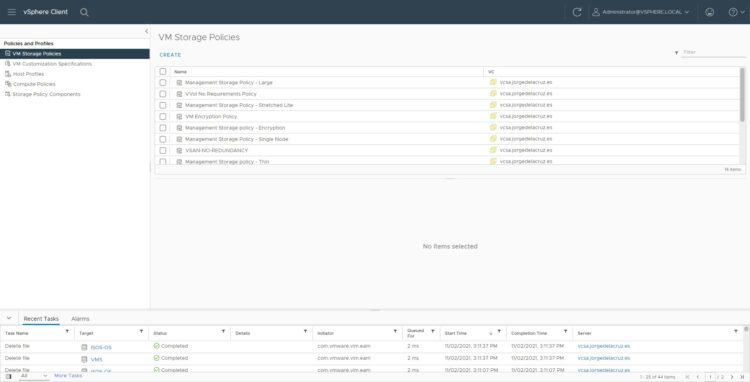
Today, I changed the IP address of my VMware vCenter Server Appliance and was greeted by a SSL certificate verification failed error message after I tried to login to the vSphere web-client on the new IP address.
Apparently, the VCSA does not regenerate a new SSL certificate automatically after you changed the IP address and/or hostname.
In order to generate a new SSL certificate and automatically generate new certificates, if needed, follow the steps below:
- Login to your VCSA Console (https://vcsa:5480)
- Go to the Admin-Tab, set Certificate regeneration enabled to Yes and Save setting.
This will make sure a new SSL certificate will be generated every time you reboot your VCSA instance. - Last, go to the System-Tab and Reboot the VCSA instance to get a new certificate generated.
Note: Rebooting VCSA can take up to 10 minutes.
- Once the VCSA is back up and all services are started, you can login to the vSphere web-client. The SSL certificate error should no longer be present.
Недавно столкнулись с такой проблемой, что при попытке конвертировать физический сервер в виртуальную инфраструктуру VMware vSphere с помощью VMware vCenter Converter Standalone возникла ошибка:
SSL Exception: error:14077102:SSL routines:SSL23_GET_SERVER_HELLO:unsupported protocol
Ошибка появлялась в момент подключения к vCenter:
Изменение параметра SSL в файле converter-worker.xml, описанного в статье VMware Knowledge Base, ни к чему не приводило, ошибка 14077102 оставалась.
Примечание. Коротко об используемых версиях программного обеспечения:
- VMware vCenter Converter Standalone – 6.2.0, build 8466193;
- VMware vCenter – 5.5.0, 2646482;
- ОС конвертируемого сервера – Windows Server 2012 R2;
- ОС сервера с установленным конвертером – Windows Server 2008 R2.
Никакие манипуляции с переустановкой конвертера на другой сервер также не увенчались успехом.
Решение по устранению ошибки SSL 14077102
В нашем окружении помог только обходной путь в виде отката версии конвертера на 6.1.1.
После установки старой версии параметр useSsl в файле converter-worker.xml был переведен в состояние false, согласно статьи выше из базы знаний производителя:
После редактирования файла не забывайте перезапустить службу VMware vCenter Converter Standalone Worker. Надеемся, что это статья сэкономит кому-то час-два рабочего времени.
Видео от вендора по отключению использования SSL в конвертере:
- 5555
Содержание
- Как установить VMWare workstation в Windows?
- Vmware error ssl key
- Vmware error ssl key
- Setup failed to generate the ssl keys necessary to run vmware server windows 10 + видео обзор
- Setup failed to generate the ssl keys necessary to run vmware server windows 10
- Setup failed to generate the ssl keys necessary to run vmware server windows 10
- Сертификаты безопасности и SSL в VMware ESXi и vCenter Server
- Использование сертификатов в vCenter Server.
- Создание нового сертификата для ESXi.
- Создание подписанных сертификатов для ESXi.
- Установка подписанных сертификатов для хоста ESXi.
- voroshil’s Blog
- Здесь должно быть что-то умное
- Установка SSL сертификата в VMWare
- Подготовка сертификата
- Установка сертификата на ESXi
- Установка сертификата на vCenter
- Setup failed to generate the ssl keys necessary to run vmware server windows 10
- Видео
Как установить VMWare workstation в Windows?
- Вопрос задан более трёх лет назад
- 18451 просмотр
Средний 6 комментариев
> VMWare видимо оттуда тянет OpenSSL
Переменная среды path как выглядит?
Process Monitor из состава Sysinternal что показывает?
Автор вопроса say: >> vvmtutby, всё оказалось в том, что OpenSSL не может быть запущен из-за отсутствия необходимых системных библиотек, одна из которых libeay32.dll .
Nikname_non_name, ну что же раз всё прояснилось пишите «Ответ» . . .
(
С этим:
«как отключить Hyper-V», Device Guard / Creditional Guard
не столкнулись? Win 10 1607? 1511?
> VMWare workstation 15.5 в Windows 10
Предполагаю, что следующим вопросом будет «как отключить Hyper-V»,
Device Guard / Creditional Guard
М.б. удастся «уйти» на «связку» Hyper-V и совместимое ПО ( используется API WHPX ( Windows Hypervisor Platform )
— WSL2
— VirtualBox 6.0.X ( 6.1.X пока на стадии Beta1)
— эмуляторы Android
— QEMU
?
P.S. На всякий случай, привожу «чем всё завершилось» :
Автор вопроса say: >> vvmtutby, всё оказалось в том, что OpenSSL не может быть запущен из-за отсутствия необходимых системных библиотек, одна из которых libeay32.dll .
Источник
Vmware error ssl key
Fishing in the mud .
I have two suggestions:
before installation open regedit and delete
Then recreate it — make sure administrators and system have full access.
WS 6.5 installer likes to shoot itself in the foot by setting permissions for
in such a way that it can no longer access it itself.
Also check if you have a ssleay.dll in your path which uses an older version than 0.9.7.100
description of vmx-parameters:
________________________________________________
Do you need support with a VMFS recovery problem ? — send a message via skype «sanbarrow»
I do not support Workstation 16 at this time .
- Mark as New
- Bookmark
- Subscribe
- Mute
- Subscribe to RSS Feed
- Permalink
- Report Inappropriate Content
Thanks for replying. I tried your suggestions but it is still generating the error.
- Mark as New
- Bookmark
- Subscribe
- Mute
- Subscribe to RSS Feed
- Permalink
- Report Inappropriate Content
Next I would try the install-cleaner.exe from knowledgebase 1308 and clean up.
Reboot, reboot again and try once more
description of vmx-parameters:
________________________________________________
Do you need support with a VMFS recovery problem ? — send a message via skype «sanbarrow»
I do not support Workstation 16 at this time .
- Mark as New
- Bookmark
- Subscribe
- Mute
- Subscribe to RSS Feed
- Permalink
- Report Inappropriate Content
Well, I tried the directions from the page you recommended. I uninstalled using Control Panel, I used the clean-install.exe, rebooted twice and tried the install of 6.5.0-118166. Still got the error message.
Second try, I tried uninstall using Control Panel, clean-install.exe, reboot, clean-install.exe (nothing found to remove), reboot, and install. Error message.
Third try, followed the manual instructions for removal, then ran clean-install.exe, reboot twice and tried install. Error message.
I’ll just stay with 6.0.4-93057 since I have no problems installing it and running the VMs with it. Obviously, there is something with 6.5.0-118166 that does not like something on my system. I am running a typical Windows 2003 server setup with nothing fancy or customized and up to date with MS updates. I tried installing it with RRAS and firewall disabled to make sure some port was not being blocked but it still failed. I just cannot believe that I can run the old version and not the new version. I guess and hope some more testing needs to be done on 6.5.0. I can provide a complete break down of the system and installations if it is needed and if anyone wants to take a crack at it.
I’ll have to inform our customers, since they have the same typical setup, that I would recommend not installing 6.5.0 until some patches/bug fixes/new releases are made since a) I cannot deterime what the issue is, b) I have already spent 2 work days trying to resolve this, and c) I need their enviroment to be the same as mine for support purposes. I’ll keep my eye on the patches as they appear and hopefully someone at VMware will get this issue resolved.
Источник
Vmware error ssl key
Hi — I’ve been unable to get the latest (2.0) BDE deployed against a new vCenter environment.
The environment is as follows:
One ESXi host — 5.5 build 1623387
One vCenter Appliance — 5.5 build 2001466
Embedded DB, Embedded SSO
BDE 2.0.0.951 build 1885370
NTP and DNS are configured and tested.
Deploying seems to work well but I cannot get past the error on initialization:
ERROR: Failed to Launch Serengeti Web Service. Illegal option: /opt/serengeti/.certs/serengeti_ws.jks.keytool -importkeystore [OPTION]. Imports one or all entries from another keystore..Options. -srckeystore source keystore name.-destkeystore destination keystore name.-srcstoretype source keystore type.-deststoretype destination keystore type.-srcstorepass source keystore password.-deststorepass destination keystore password.-srcprotected source keystore password protected.-srcprovidername source keystore provider name.-destprovidername destination keystore provider name.-srcalias source alias.-destalias destination alias.-srckeypass source key password.-destkeypass destination key password.-noprompt do not prompt.-providerclass provider class name.-providerarg provider argument.-providerpath provider classpath.-v verbose output..Use «keytool -help» for all available commands And, while I can connect to the BDE server with the plugin,
I cannot create objects as they result in an error «unable to connect to vCenter Server» — this looks like the BDE appliance is having a hard time importing the vCenter SSL keys. Has anyone seen this? Any thoughts on getting past it? Thanks! -Andrew
Источник
Setup failed to generate the ssl keys necessary to run vmware server windows 10 + видео обзор
Setup failed to generate the ssl keys necessary to run vmware server windows 10
well i did that, empyted the TEMP folder, and deleted all other left entry from vmware and checked the date on my pc but still the same problem.
Funny enough, i have installed the same vmware workstation on other pc (just to test)
and was fine and im using it, but here it just won’t install.
Maybe a previous version left something and i can’t install another now, like blacklisted my pc!!
any help here please.
When you get anything different then «file not found» do this:
description of vmx-parameters:
Thank you very much for the reply.
Well, i tried to try that before and again i couldn’t find it, actually i found OPENSSL.EXE-04919655.pf in C:WINDOWSPrefetch
(actually you meant to type in Run the openssl.exe? or in the prompt command? tried both didn’t work. then searched. i may have got you wrong.
i believe worked for you, and i wanted to try everything.worse comes the last, i may format it. has to work here.)
so i tried to rename these files and nothing again, same error. Although the value in the registry don’t think it matters.
I did try already to short the name like C:VMwareWorksation but got the same error.
Also checked my time and date, they’re up to date.
Any further help please, will be much appreciated. (really need it)
am i right in thinking that there’s something here that won’t let VMware to install? Because on my mate’s PC beside me installed fine.
Is there any way i can work around this openssl.exe file?
Thank you once more.
very early in the setup VMware creates ssl-keys by calling a tempoarary openssl.exe with special parameters.
If your system already has a version of openssl inside its searchpath this may fail.
Thats why you should open a cmd-box and type openssl.exe
If you have a version of openssl somewhere in your path this command will show this.
description of vmx-parameters:
i tried again and the same, unfortunately.
not doing it right i think, about the oppening a cmd and typing openssl.exe, i’m on a XP pro, and all i get is Windows cannot find.
or after typed cmd in the prompt command, you know, not a valid command.
it’s clear now, but i think i don’t have a openssl.exe installed already, well and if i do, i can’t find it. There was and entry in the registry as i mentioned before. (i’ve deleted it.)
Now i think this openssl may have been left from a previous version of VMware. Is that possible? I so i guess i still have to find it and rename it right? And where would it be?
And if i don’t have an openssl.exe installed already, what would be the problem then? and how to overcome it?
Look, i really appreciate what you’re doing here, thank you for what you did so far. Hopefuly we’ll get this to work. As it must.
description of vmx-parameters:
Somehow I have the feeling the first installation must have left a registry entry that prevents the installer to generate SSL keys. Does anybody by any chance know which entry? Or does anybody have a clue what causes the ssl issue?
TNX FOR THE HINT. Checking out KB1308 brought me to the following discussion: http://communities.vmware.com/thread/90450
I can confirm that after clearing the windowstemp directory completely with exception of the file in use AND disabling Panda Internet Security Suite the installation of VMware Server 2 on Windows XP home edition worked perfectly. Server is now up and running debian linux on a virtual machine.
Unfortunately, I did not log previously whether I had Panda Internet Security active or not. I think, though, deactivating AV etc was one of the first measurements after the ssl generation error, but, as said, I didn’t log it. So, most likely it’s the stuff in the windowstemp folder. Possibly it was the influence of Panda.
Setup failed to generate the ssl keys necessary to run vmware server windows 10
I have two suggestions:
before installation open regedit and delete
WS 6.5 installer likes to shoot itself in the foot by setting permissions for
in such a way that it can no longer access it itself.
Also check if you have a ssleay.dll in your path which uses an older version than 0.9.7.100
description of vmx-parameters:
Thanks for replying. I tried your suggestions but it is still generating the error.
Next I would try the install-cleaner.exe from knowledgebase 1308 and clean up.
Reboot, reboot again and try once more
description of vmx-parameters:
Well, I tried the directions from the page you recommended. I uninstalled using Control Panel, I used the clean-install.exe, rebooted twice and tried the install of 6.5.0-118166. Still got the error message.
Second try, I tried uninstall using Control Panel, clean-install.exe, reboot, clean-install.exe (nothing found to remove), reboot, and install. Error message.
Third try, followed the manual instructions for removal, then ran clean-install.exe, reboot twice and tried install. Error message.
I’ll just stay with 6.0.4-93057 since I have no problems installing it and running the VMs with it. Obviously, there is something with 6.5.0-118166 that does not like something on my system. I am running a typical Windows 2003 server setup with nothing fancy or customized and up to date with MS updates. I tried installing it with RRAS and firewall disabled to make sure some port was not being blocked but it still failed. I just cannot believe that I can run the old version and not the new version. I guess and hope some more testing needs to be done on 6.5.0. I can provide a complete break down of the system and installations if it is needed and if anyone wants to take a crack at it.
I’ll have to inform our customers, since they have the same typical setup, that I would recommend not installing 6.5.0 until some patches/bug fixes/new releases are made since a) I cannot deterime what the issue is, b) I have already spent 2 work days trying to resolve this, and c) I need their enviroment to be the same as mine for support purposes. I’ll keep my eye on the patches as they appear and hopefully someone at VMware will get this issue resolved.
Сертификаты безопасности и SSL в VMware ESXi и vCenter Server
ESXi и vCenter Server поддерживают стандартные X.509 v3 сертификаты для криптования соединения через SSL (Secure Socet Layer). Проверка сертификатов включена по умолчанию и SSL сертификаты используются для шифрования сетевого трафика. Тем не менее, при использовании ESXi и vCenter Server сертификаты автоматически генерируются при установке и хранятся на серверной системе. Эти сертификаты уникальны и уже позволяют получить доступ к серверу через SSL, но они непроверяемы и не подписаны “доверенным центром сертификации”. Таким образом, сертификаты по умолчанию являются уязвимыми.
Для того, чтобы получить наибольшую безопасность при использовании SSL-соединения (особенно, если вы собираетесь использовать соединение из-вне) необходимо сгенерировать новые подписанные сертификаты. Если сертификаты не установлены, связь между сервером и vCenter vSphere клиентами зашифрована с использованием самозаверенного сертификата, которого недостаточно для безопасной аутентификации в производственной среде.
Сертификат состоит из двух файлов:
rui.crt — непосредственно сам сертификат,
rui.key — “скрытый” ключ.
Дефолтное расположение сертификатов следующее:
Использование сертификатов в vCenter Server.
В vCenter Server проверка сертификатов включена по умолчанию. Для того, чтобы убедиться подключитесь к vCenter Server с помощью vSphere Client и выберите:
Затем проверьте SSL Settings на левой панели и убедитесь, что выбран пункт Check host certificates.
Создание нового сертификата для ESXi.
Если вы изменили имя хоста ESXi, удалили сертификаты, или возникли какие-то другие обстоятельства, при которых необходимо сгенировать новые выполните следующие действия:
1. Подключитесь к вашему ESXi хосту через SSH и получите root-привилегии.
2. Создайте резервную копию существующих сертификатов командами:
3. Для генерации новых сертификатов:
По завершению вы получите предупреждение:
Предупреждение можно проигнорировать — новые сертификаты созданы. Выполнив команду:
можно сравнить время создания файлов сертификатов.
4. Восстанавливаем атрибуты для созданных файлов сертификатов:
5. Перезагружаем хост ESXi.
Создание подписанных сертификатов для ESXi.
В качестве центра сертификации (CA) можно использовать OpenSSL. И хотя шаги для создания сертификатов в различных операционных системах могут несколько отличаться, общий принцип един, поскольку vSphere использует X.509 v3 SSL сертификаты.
ВНИМАНИЕ! Перед началом убедитесь, что вы используете OpenSSL версии 0.9.8, иначе работа SSL не гарантируется.
Для упрощения установки OpenSSL в ОС Windows можно воспользоваться Shining Light Installer’ом, в то время как во FreeBSD и в большинстве Linux-дистрибутивов этот пакет уже установлен по умолчанию. В Windows так же потребуется установить Microsoft Visual C++ 2008 Redistributable Package (x86).
Перед тем, как приступить к конфигурированию OpenSSL, создайте бэкап openssl.cfg:
Во FreeBSD и Debian:
В других Linux-дистрибутивах расположение файла может отличаться.
Теперь непосредственно сам конфиг, который нужно привести к следующему виду:
Жирным выделенные поля для заполнения. Если вы не укажете эти параметры можете ввести их при создании сертификата. Следующая команда создаст rui.csr:
Теперь конвертируем ключ в RSA-формат следующей командой:
После того, как создан “запрос” должен быть сгенерирован непосредственно сам “ответ”, то есть ответная составляющая сертификата.
Для коммерческих центров сертифицирования:
Созданный запрос необходимо направить в центр сертифицирования (CA) и полученный ответный ключ установить на сервер vCenter Server.
Для центра сертифицирования Microsoft:
Обратите внимание, что для Windows Server 2003 CA требуется версия Enterprise, так как другие редакции не имеют шаблонов для экспорта SSL-сертификатов.
1. Откройте в веб-интерфейс центра сертифицирования Microsoft ( Microsoft CA certificate authority web interface). По умолчанию: http://servername/CertSrv/
2. Перейдите: Request a certificate > advanced certificate request.
3. Нажмите Submit a certificate request by using a base-64-encoded CMC or PKCS #10 file, или submit a renewal request by using a base-64-encoded PKCS #7 file.
4. Используя текстовый редактор скопируйте контент:
Сохраните созданный сертификат rui.crt и перейдите к этапу его установки.
Для самоподписанных (self-signed) сертификатов:
Следующая команда создаст сертификат с помощью OpenSSL:
Установка подписанных сертификатов для хоста ESXi.
По завершению хост будет готов для присоединения к кластеру, однако потребуется выполнить следующие шаги для каждого из хостов, где требовалось сменить сертификат:
voroshil’s Blog
Здесь должно быть что-то умное
Пн 24 Декабрь 2012
Этот способ прекрасно работает с серверами vSphere 4.1 ESXi и сертификатами, полученными от Windows Server 2008 R2 CA. Просто выполните процедуру шаг за шагом и все должно получиться.
Подготовка сертификата
Загрузите исполняемые файлы Windows OpenSSL, 32-bit или 64-bit. Не забудьте установить исполняемые файлы Visual C++ до установки OpenSSL.
Создайте каталог с именем Certificates в c:OpenSSL-Win64 (просто чтобы держать сертификаты отдельно).
На данном этапе OpenSSL начнет запрашивать значения различных параметров. Значения по-умолчанию для большинства из них можно указать в файле openssl.cnf, чтобы сэкономить время на вводе одних и тех же значений. Файл с параметрами указывается добавлением “-config openssl.cnf” к параметрам кодантной строки. УБЕДИТЕСЬ, что в COMMON NAME указан FQDN вашего ESX сервера (например: esx-node-1.example.com). Пароль не задавайте.
При помощи любого текстового редактора скопируйте содержимое файла rui.crs в буфер обмена.
Перейдите на встроенный web-интерфейс вашего Microsoft CA. (Обычно это http://my-ca-server.example.com/certsrv), перейдите в раздел “Запрос сертификата”, затем в раздел “расширенный запрос сертификата”
На экране «Сохраненный запрос» вставьте содержимое буфера клавиатуры и измените шаблон сертификата на «Веб-сервер». Отправьте запрос, затем загрузите сертификат в кодировке Base-64 (не цепочку сертификатов). Сохраните файл под именем rui.cer в каталог c:OpenSSL-Win64Certificates
Установка сертификата на ESXi
Откройте командную строку VMware vSPhere CLI (потребуются vMA или RemoteCLI).
Перезагрузите ESXi сервер и подождите пять минут после того, как появится ESXi консоль. Добавьте ESXi сервер в vCenter, процесс больше не должен зависать на 80% и завершаться с ошибкой.
Установка сертификата на vCenter
Сделайте резервную копию имеющихся файлов rui.key, rui.crt, и rui.pfx из папки C:Documents and SettingsAll UsersApplication DataVMwareVMware VirtualCenterSSL.
Скопируйте ваши файлы rui.key, rui.crt, и rui.pfx в C:Documents and SettingsAll UsersApplication DataVMwareVMware VirtualCenterSSL.
Замечание: В Windows Server 2008, копируйте файлы в C:ProgramDataVMwareVMware VirtualCenterSSL
Перезапустите службу VirtualCenter Server. Детальную информацию об Остановке, запуске и перезапуске служб vCenter смотрите в (1003895).
Для сброса пароля базы данных, перейдите в папку, где установлен vCenter Server и запустите команду:
В момент запроса нового пароля введите старый пароль на базу данных, введите его еще раз для подтверждения.
Перезапустите службу VirtualCenter Server. Детальную информацию об Остановке, запуске и перезапуске служб vCenter смотрите в (1003895).
Чтобы установить сертификат в хранилище доверенных сертификатов на vCenter Server: Сделайте двойной щелчок на файле rui.crt, расположенном в C:Documents and SettingsAll UsersApplication DataVMwareVMware VirtualCenterSSL.
Щелкните «Установить сертификат», «Далее», «Далее».
Выберите «Указать расположение вручную».
Выберите «Доверенные корневые центры идентификации».
Щелкните «ОК», «Далее», «Завершить», «Да».
Подключитесь к vCenter Server, используя новый сертификат. Если узлы ESX находятся в состоянии disconnected, щелкните правой кнопкой на узле, следуйте подсказкам и подключите узел используя учетные данные root.
Posted by Vladimir Voroshilov Пн 24 Декабрь 2012 Blog
Setup failed to generate the ssl keys necessary to run vmware server windows 10
Всем привет сегодня хочу рассказать, как решается ошибка cannot verify the ssl thumbprint в VMware ESXI 5.5. Данная неприятность у меня выскочила после того, как я в тестовой среде переустанавливал VMware ESXI хост. Можете заметить, что ваш сервер, не может проверить SSL сертификат, при подключении. Смотрим как это решить и понять первоисточник проблемы. На все работы у вас уйдет не более 10 минут вашего рабочего времени.
Вот как более подробно выглядит данная ошибка cannot verify the ssl thumbprint. Данная ошибка возникает, когда у вас устарел или поменялся SSL сертификат, в моем случае была переустановка системы с последующим, тем же именем.
Щелкаем правым кликом по нужному хосту ESXi и выбираем Connect
Вас спросят хотите ли вы произвести reconnect, жмем Да.
Задаем логин и пароль для доступа и жмем next.
Вас предупредят, что будет заменен SSl сертификат
Finish, на этом все
Ваш хост успешно добавится и вы сможете продолжить работу с ним.
Видео
FIXED!! | Setup Failed To Generate the SSL Keys Neccassary to Run VMWare
Solved- Setup failed to generate the SSL keys necessary to run VMware
[Windows Containers] Remote Management of Docker Host over TCP port encrypted with TLS
How to resolve SSL Exception error 14077102 of vmware converter
Velociraptor — GUI Setup — Windows Client
SSL Certificate Error Fix [Tutorial]
VMware Horizon connection server SSL certificate configuration
Как исправить ошибку «WMWare Could not get vmci driver version»
Skyline Automation Toolkit: Using Custom Option
failed to get an SSL thumbprint of the target server certificate, VCenter 7.0 installation
Источник
Содержание
- Setup failed to generate the ssl keys necessary to run vmware server windows 10
- Setup failed to generate the ssl keys necessary to run vmware server windows 10
- the reason
- Finally resolved
- Setup failed to generate the ssl keys necessary to run vmware server windows 10
- Setup failed to generate the ssl keys necessary to run vmware server windows 10
- Intelligent Recommendation
- VMware Workstation Pro installation
- Solution VMware Workstation 15 and Device / Credential Guard incompatible (effective pro-test)
- VMware Workstation 15 Pro key
- VMware Workstation Pro14 permanent activation key (2018.9.13 effective pro-test)
- VMware Workstation 12 Pro installation
- More Recommendation
- VMware Workstation Pro software installation
- VMware WorkStation Pro installation tutorial
- VMware Workstation 15 Pro installation (permanent activation key)
- VMware WorkStation Pro 15 Virtual Machine installation Windows10 system
- Solve VMware Workstation Pro installation CentOS7 bridged network can not connect
Setup failed to generate the ssl keys necessary to run vmware server windows 10
The machine environment is Win10 Professional, when installing VMware Pro15, error, specific error message:
Setup failed to generate the SSL keys necessary to run VMware Server. Click Ok to cancel this installation.
The specific version of the installation is as follows:
My solution is a bit twisted, for reference only;
Find VMware’s historical version VMware Pro 12, successfully installed, avoid error. The reason for installing the error is not in-depth research (can be posted);
Link: https: //pan.baidu.com/s/1ek-8gj0_ec1eed7_d044zg
Extraction code: 4rr0
The online upgrade to the Pro 15 version after the installation is successful.
After the upgrade is successful, it may be reported, the program cannot start normally:
Next download:
Fix the DLL file to start successfully.
Источник
Setup failed to generate the ssl keys necessary to run vmware server windows 10
well i did that, empyted the TEMP folder, and deleted all other left entry from vmware and checked the date on my pc but still the same problem.
Funny enough, i have installed the same vmware workstation on other pc (just to test)
and was fine and im using it, but here it just won’t install.
Maybe a previous version left something and i can’t install another now, like blacklisted my pc!!
any help here please.
When you get anything different then «file not found» do this:
description of vmx-parameters:
Thank you very much for the reply.
Well, i tried to try that before and again i couldn’t find it, actually i found OPENSSL.EXE-04919655.pf in C:WINDOWSPrefetch
(actually you meant to type in Run the openssl.exe? or in the prompt command? tried both didn’t work. then searched. i may have got you wrong.
i believe worked for you, and i wanted to try everything.worse comes the last, i may format it. has to work here.)
so i tried to rename these files and nothing again, same error. Although the value in the registry don’t think it matters.
I did try already to short the name like C:VMwareWorksation but got the same error.
Also checked my time and date, they’re up to date.
Any further help please, will be much appreciated. (really need it)
am i right in thinking that there’s something here that won’t let VMware to install? Because on my mate’s PC beside me installed fine.
Is there any way i can work around this openssl.exe file?
Thank you once more.
very early in the setup VMware creates ssl-keys by calling a tempoarary openssl.exe with special parameters.
If your system already has a version of openssl inside its searchpath this may fail.
Thats why you should open a cmd-box and type openssl.exe
If you have a version of openssl somewhere in your path this command will show this.
description of vmx-parameters:
i tried again and the same, unfortunately.
not doing it right i think, about the oppening a cmd and typing openssl.exe, i’m on a XP pro, and all i get is Windows cannot find.
or after typed cmd in the prompt command, you know, not a valid command.
it’s clear now, but i think i don’t have a openssl.exe installed already, well and if i do, i can’t find it. There was and entry in the registry as i mentioned before. (i’ve deleted it.)
Also found the a openssl.exe in the Temp folder. renamed it. and didn’t work. deleted it and didn’t work either. But i believe is the one from VMware (the one just tried to install) already.
Now i think this openssl may have been left from a previous version of VMware. Is that possible? I so i guess i still have to find it and rename it right? And where would it be?
And if i don’t have an openssl.exe installed already, what would be the problem then? and how to overcome it?
Look, i really appreciate what you’re doing here, thank you for what you did so far. Hopefuly we’ll get this to work. As it must.
description of vmx-parameters:
Somehow I have the feeling the first installation must have left a registry entry that prevents the installer to generate SSL keys. Does anybody by any chance know which entry? Or does anybody have a clue what causes the ssl issue?
TNX FOR THE HINT. Checking out KB1308 brought me to the following discussion: http://communities.vmware.com/thread/90450
I can confirm that after clearing the windowstemp directory completely with exception of the file in use AND disabling Panda Internet Security Suite the installation of VMware Server 2 on Windows XP home edition worked perfectly. Server is now up and running debian linux on a virtual machine.
Unfortunately, I did not log previously whether I had Panda Internet Security active or not. I think, though, deactivating AV etc was one of the first measurements after the ssl generation error, but, as said, I didn’t log it. So, most likely it’s the stuff in the windowstemp folder. Possibly it was the influence of Panda.
Источник
the reason
The system crashed this morning (win10). After reinstalling at noon, I haven’t equipped a few software. When I installed it on vmware, the installation failed, and it prompted the ssl key could not be generated. (This installation package was used before, and no problems were encountered)
Tried to install C++ 2017-failed
Try to enter openssl in cmd and found that openssl has been installed on the computer, so consider whether it is because openssl has been installed and does not match the built-in version of vmware, which caused the installation to fail.
After trying to find that vmware will decompress the files in the temp directory during the installation process, one of which is openssl.exe
, the problem is probably here. I searched the installed software and found this openssl

I found that the software that uses openssl is qgis, anaconda, git, so it’s easy to say. Modify the environment variables so that vm cannot find openssl.exe except for itself during the installation process, and start trying

Temporarily delete the environment variables of several software, and then try to install
Make sure that the environment variables have been cleared successfully
Then use cmd to call openssl so as not to miss the net in other places
Try to install! installation failed!
With the idea of a blind cat and a dead mouse, I changed the name of all openssl.exe and reinstalled it! Failed again!
Finally resolved
The final solution-I went to the official website to find an installation package and installed it smoothly!
The previous steps are reserved for those who are destined to see, don’t fiddle with it. Go to the next installation package on the official website to try it first, no messing around!
Источник
Setup failed to generate the ssl keys necessary to run vmware server windows 10
I have two suggestions:
before installation open regedit and delete
WS 6.5 installer likes to shoot itself in the foot by setting permissions for
in such a way that it can no longer access it itself.
Also check if you have a ssleay.dll in your path which uses an older version than 0.9.7.100
description of vmx-parameters:
Thanks for replying. I tried your suggestions but it is still generating the error.
Next I would try the install-cleaner.exe from knowledgebase 1308 and clean up.
Reboot, reboot again and try once more
description of vmx-parameters:
Well, I tried the directions from the page you recommended. I uninstalled using Control Panel, I used the clean-install.exe, rebooted twice and tried the install of 6.5.0-118166. Still got the error message.
Second try, I tried uninstall using Control Panel, clean-install.exe, reboot, clean-install.exe (nothing found to remove), reboot, and install. Error message.
Third try, followed the manual instructions for removal, then ran clean-install.exe, reboot twice and tried install. Error message.
I’ll just stay with 6.0.4-93057 since I have no problems installing it and running the VMs with it. Obviously, there is something with 6.5.0-118166 that does not like something on my system. I am running a typical Windows 2003 server setup with nothing fancy or customized and up to date with MS updates. I tried installing it with RRAS and firewall disabled to make sure some port was not being blocked but it still failed. I just cannot believe that I can run the old version and not the new version. I guess and hope some more testing needs to be done on 6.5.0. I can provide a complete break down of the system and installations if it is needed and if anyone wants to take a crack at it.
I’ll have to inform our customers, since they have the same typical setup, that I would recommend not installing 6.5.0 until some patches/bug fixes/new releases are made since a) I cannot deterime what the issue is, b) I have already spent 2 work days trying to resolve this, and c) I need their enviroment to be the same as mine for support purposes. I’ll keep my eye on the patches as they appear and hopefully someone at VMware will get this issue resolved.
Источник
Setup failed to generate the ssl keys necessary to run vmware server windows 10
Since others gave a virtual machine file, it is VMware format, you have to install VMware to use the viewing the virtual machine file, but in the installation, the software error:
Solution:
Uninstall all installed Microstriburtable files, and then download Microsoft Visual C ++ 2015, X86 and X64.
After downloading and installation is complete, you can resolve this error.
Intelligent Recommendation
VMware Workstation Pro installation
1. Virtual machine settings Custom NAT mode Edit-Virtual Network Editor-Subnet Ip Subnet Mask NAT DHCP start end 2. Go back to windows-> Open Network and Sharing Center-> Change adapter settings.
Solution VMware Workstation 15 and Device / Credential Guard incompatible (effective pro-test)
Error prompt description After the success of others win10 Home Edition installed VMware, xp virtual machine when set up, there is something wrong. Online with a bunch of garbage methods, such as: clo.
VMware Workstation 15 Pro key
This article is reproduced in felix__h Original link First, the activation key YG5H2-ANZ0H-M8ERY-TXZZZ-YKRV8 UG5J2-0ME12-M89WY-NPWXX-WQH88 UA5DR-2ZD4H-089FY-6YQ5T-YPRX6 GA590-86Y05-4806Y-X4PEE-ZV8E0 Z.
VMware Workstation Pro14 permanent activation key (2018.9.13 effective pro-test)
Practice with the need to install Linux environment project assistance, so you need to download a VMware Workstation Pro to install a virtual machine, will finally toss a good job. In view of the many.
VMware Workstation 12 Pro installation
Visit its official websitehttps://www.vmware.com/cn.html Click Download and click on Workstation Pro under Product Downloads. At this time you need to register an account. I have already registered, e.
More Recommendation
VMware Workstation Pro software installation
1. Enter:VMware official website 2. Select Workstation Pro in the download interface 3. Go in and register your personal information, then choose to download from 4. Then download the software install.
VMware WorkStation Pro installation tutorial
VMware WorkStation Pro installation tutorial First, download the installation package (1) Download the VMware installation package in the official website (https://www.vmware.com/cn.html), click [Work.
VMware Workstation 15 Pro installation (permanent activation key)
VMware WorkStation Pro 15 Virtual Machine installation Windows10 system
VMware WorkStation Pro 15 Virtual Machine installation Windows10 system First, ready to work 1. Install the VMware Workstation Pro 15 Virtual Machine (Note: No VMware Workstation Pro 15 Virtual Machin.
Solve VMware Workstation Pro installation CentOS7 bridged network can not connect
System image: CentOS-7-x86_64-DVD-1804.iso Virtual Machine: VMware Workstation 12 Pro 12.5.9 build-7535481 New Virtual Machine selected network type, the use bridged networking. After installation sys.
Источник
Содержание
- Как установить VMWare workstation в Windows?
- Как установить VMWare workstation в Windows?
- Setup failed to generate the ssl keys necessary to run vmware server windows
- Setup failed to generate the ssl keys necessary to run vmware server windows
- voroshil’s Blog
- Здесь должно быть что-то умное
- Установка SSL сертификата в VMWare
- Подготовка сертификата
- Установка сертификата на ESXi
- Установка сертификата на vCenter
Как установить VMWare workstation в Windows?
- Вопрос задан более года назад
- 11054 просмотра
> VMWare видимо оттуда тянет OpenSSL
Переменная среды path как выглядит?
Process Monitor из состава Sysinternal что показывает?
Автор вопроса say: >> vvmtutby, всё оказалось в том, что OpenSSL не может быть запущен из-за отсутствия необходимых системных библиотек, одна из которых libeay32.dll .
Nikname_non_name, ну что же раз всё прояснилось пишите «Ответ» . . .
(
С этим:
«как отключить Hyper-V», Device Guard / Creditional Guard
не столкнулись? Win 10 1607? 1511?
> VMWare workstation 15.5 в Windows 10
Предполагаю, что следующим вопросом будет «как отключить Hyper-V»,
Device Guard / Creditional Guard
М.б. удастся «уйти» на «связку» Hyper-V и совместимое ПО ( используется API WHPX ( Windows Hypervisor Platform )
— WSL2
— VirtualBox 6.0.X ( 6.1.X пока на стадии Beta1)
— эмуляторы Android
— QEMU
?
P.S. На всякий случай, привожу «чем всё завершилось» :
Автор вопроса say: >> vvmtutby, всё оказалось в том, что OpenSSL не может быть запущен из-за отсутствия необходимых системных библиотек, одна из которых libeay32.dll .
Как установить VMWare workstation в Windows?
- Вопрос задан более года назад
- 11054 просмотра
> VMWare видимо оттуда тянет OpenSSL
Переменная среды path как выглядит?
Process Monitor из состава Sysinternal что показывает?
Автор вопроса say: >> vvmtutby, всё оказалось в том, что OpenSSL не может быть запущен из-за отсутствия необходимых системных библиотек, одна из которых libeay32.dll .
Nikname_non_name, ну что же раз всё прояснилось пишите «Ответ» . . .
(
С этим:
«как отключить Hyper-V», Device Guard / Creditional Guard
не столкнулись? Win 10 1607? 1511?
> VMWare workstation 15.5 в Windows 10
Предполагаю, что следующим вопросом будет «как отключить Hyper-V»,
Device Guard / Creditional Guard
М.б. удастся «уйти» на «связку» Hyper-V и совместимое ПО ( используется API WHPX ( Windows Hypervisor Platform )
— WSL2
— VirtualBox 6.0.X ( 6.1.X пока на стадии Beta1)
— эмуляторы Android
— QEMU
?
P.S. На всякий случай, привожу «чем всё завершилось» :
Автор вопроса say: >> vvmtutby, всё оказалось в том, что OpenSSL не может быть запущен из-за отсутствия необходимых системных библиотек, одна из которых libeay32.dll .
Setup failed to generate the ssl keys necessary to run vmware server windows
- VMware Technology Network
- :
- SDDC
- :
- VMware vSphere
- :
- Guest Operating Systems
- :
- Windows Discussions
- :
- Error «Setup failed to generate the SSL keys neces.
- Subscribe to RSS Feed
- Mark Topic as New
- Mark Topic as Read
- Float this Topic for Current User
- Bookmark
- Subscribe
- Mute
- Printer Friendly Page
- Mark as New
- Bookmark
- Subscribe
- Mute
- Subscribe to RSS Feed
- Permalink
- Email to a Friend
- Report Inappropriate Content
I need to install VMServer 2.02-293138 onto another Windows 7 64bit PC. I cannot get past the Error «Setup failed to generate the SSL keys necessary to run VMware Server» . I do not even need/want the SSL connection to the management console. I only connect to the VMware Server console on the PC that is running the software. I have tried the suggestions that i hove found doing Google searches including remove all files from WindowsTemp, verified that there were no other copies of openssl.exe on the PC, removed Windows Security Essentials, turned off the Windows Firewall for Private and Public, logging onto Windows as Administrator.
Are there any logs that can be examined to see why it is failing?
Can VMware Server be installed without needing the SSL key installed?
Setup failed to generate the ssl keys necessary to run vmware server windows
- VMware Technology Network
- :
- Desktop Hypervisor
- :
- VMware Workstation
- :
- VMware Workstation Pro Discussions
- :
- The setup failed to generate the SSL keys necessar.
- Subscribe to RSS Feed
- Mark Topic as New
- Mark Topic as Read
- Float this Topic for Current User
- Bookmark
- Subscribe
- Mute
- Printer Friendly Page
- Mark as New
- Bookmark
- Subscribe
- Mute
- Subscribe to RSS Feed
- Permalink
- Email to a Friend
- Report Inappropriate Content
well i did that, empyted the TEMP folder, and deleted all other left entry from vmware and checked the date on my pc but still the same problem.
Funny enough, i have installed the same vmware workstation on other pc (just to test)
and was fine and im using it, but here it just won’t install.
Maybe a previous version left something and i can’t install another now, like blacklisted my pc!!
any help here please.
- Mark as New
- Bookmark
- Subscribe
- Mute
- Subscribe to RSS Feed
- Permalink
- Email to a Friend
- Report Inappropriate Content
Open a cmd — type «openssl.exe»
When you get anything different then «file not found» do this:
locate the file openssl.exe — it is somewhere in your path — and rename it to openssl.exe-org
Run setup again — when finished — rename openssl.exe-org back to openssl.exe
description of vmx-parameters:
- Mark as New
- Bookmark
- Subscribe
- Mute
- Subscribe to RSS Feed
- Permalink
- Email to a Friend
- Report Inappropriate Content
Thank you very much for the reply.
Well, i tried to try that before and again i couldn’t find it, actually i found OPENSSL.EXE-04919655.pf in C:WINDOWSPrefetch
(actually you meant to type in Run the openssl.exe? or in the prompt command? tried both didn’t work. then searched. i may have got you wrong.
i believe worked for you, and i wanted to try everything.worse comes the last, i may format it. has to work here.)
also in the registry i found the openssl.exe as a value under the tree Current user — software — microsoft — search assistant — ACMru — 5603
so i tried to rename these files and nothing again, same error. Although the value in the registry don’t think it matters.
I did try already to short the name like C:VMwareWorksation but got the same error.
Also checked my time and date, they’re up to date.
Any further help please, will be much appreciated. (really need it)
am i right in thinking that there’s something here that won’t let VMware to install? Because on my mate’s PC beside me installed fine.
Is there any way i can work around this openssl.exe file?
Thank you once more.
- Mark as New
- Bookmark
- Subscribe
- Mute
- Subscribe to RSS Feed
- Permalink
- Email to a Friend
- Report Inappropriate Content
sorry — missed your answer .
very early in the setup VMware creates ssl-keys by calling a tempoarary openssl.exe with special parameters.
If your system already has a version of openssl inside its searchpath this may fail.
Thats why you should open a cmd-box and type openssl.exe
If you have a version of openssl somewhere in your path this command will show this.
So if you type openssl.exe and get anything other than «not found» — you must locate your already installed openssl.exe and temporarily renmae it
description of vmx-parameters:
- Mark as New
- Bookmark
- Subscribe
- Mute
- Subscribe to RSS Feed
- Permalink
- Email to a Friend
- Report Inappropriate Content
i tried again and the same, unfortunately.
not doing it right i think, about the oppening a cmd and typing openssl.exe, i’m on a XP pro, and all i get is Windows cannot find.
or after typed cmd in the prompt command, you know, not a valid command.
it’s clear now, but i think i don’t have a openssl.exe installed already, well and if i do, i can’t find it. There was and entry in the registry as i mentioned before. (i’ve deleted it.)
Also found the a openssl.exe in the Temp folder. renamed it. and didn’t work. deleted it and didn’t work either. But i believe is the one from VMware (the one just tried to install) already.
Now i think this openssl may have been left from a previous version of VMware. Is that possible? I so i guess i still have to find it and rename it right? And where would it be?
And if i don’t have an openssl.exe installed already, what would be the problem then? and how to overcome it?
Look, i really appreciate what you’re doing here, thank you for what you did so far. Hopefuly we’ll get this to work. As it must.
- Mark as New
- Bookmark
- Subscribe
- Mute
- Subscribe to RSS Feed
- Permalink
- Email to a Friend
- Report Inappropriate Content
Hmmm — looks like it doesn’t have anything to do with an already existing openssl.exe . sorry — at them moment I am running out of ideas
description of vmx-parameters:
- Mark as New
- Bookmark
- Subscribe
- Mute
- Subscribe to RSS Feed
- Permalink
- Email to a Friend
- Report Inappropriate Content
Ran into the same problem. Had VMWare Server 2 installed on an XP home for testing purpose. Was astonished it worked on XP home (remember VMWare Server 1 did not install on XP home). The XP home machine was accessed via VNC. Some problems occurred (VMWare Server 2 Web interface was not accessible from outside, only from the machine itself). Location of problem source difficult (firewall settings ok, ports open etc). I decided to uninstall VMWare Server 2 and reinstall it with proper DNS credentials etc for the web interface. Reinstallation subsequently failed due to the SSL keys issue. I’ve redownloaded the installation package from vmware, in vain. I’ve removed VIX, in vain too. VMWare Server still can’t generate the SSL keys. There’s no file openssl.* on the system. So, boogey, what’s the problem creating ssl keys? The machine even has an url consisting of a fully qualified domain name (www. . ) and is available to the web. So why would the VMware Server 2 installer not be able to generate SSL keys?
Somehow I have the feeling the first installation must have left a registry entry that prevents the installer to generate SSL keys. Does anybody by any chance know which entry? Or does anybody have a clue what causes the ssl issue?
- Mark as New
- Bookmark
- Subscribe
- Mute
- Subscribe to RSS Feed
- Permalink
- Email to a Friend
- Report Inappropriate Content
did you try kb 1308 ?
- Mark as New
- Bookmark
- Subscribe
- Mute
- Subscribe to RSS Feed
- Permalink
- Email to a Friend
- Report Inappropriate Content
TNX FOR THE HINT. Checking out KB1308 brought me to the following discussion: http://communities.vmware.com/thread/90450
I can confirm that after clearing the windowstemp directory completely with exception of the file in use AND disabling Panda Internet Security Suite the installation of VMware Server 2 on Windows XP home edition worked perfectly. Server is now up and running debian linux on a virtual machine.
Unfortunately, I did not log previously whether I had Panda Internet Security active or not. I think, though, deactivating AV etc was one of the first measurements after the ssl generation error, but, as said, I didn’t log it. So, most likely it’s the stuff in the windowstemp folder. Possibly it was the influence of Panda.
voroshil’s Blog
Здесь должно быть что-то умное
Установка SSL сертификата в VMWare
Пн 24 Декабрь 2012
Этот способ прекрасно работает с серверами vSphere 4.1 ESXi и сертификатами, полученными от Windows Server 2008 R2 CA. Просто выполните процедуру шаг за шагом и все должно получиться.
Подготовка сертификата
Загрузите исполняемые файлы Windows OpenSSL, 32-bit или 64-bit. Не забудьте установить исполняемые файлы Visual C++ до установки OpenSSL.
Создайте каталог с именем Certificates в c:OpenSSL-Win64 (просто чтобы держать сертификаты отдельно).
На данном этапе OpenSSL начнет запрашивать значения различных параметров. Значения по-умолчанию для большинства из них можно указать в файле openssl.cnf, чтобы сэкономить время на вводе одних и тех же значений. Файл с параметрами указывается добавлением “-config openssl.cnf” к параметрам кодантной строки. УБЕДИТЕСЬ, что в COMMON NAME указан FQDN вашего ESX сервера (например: esx-node-1.example.com). Пароль не задавайте.
При помощи любого текстового редактора скопируйте содержимое файла rui.crs в буфер обмена.
Перейдите на встроенный web-интерфейс вашего Microsoft CA. (Обычно это http://my-ca-server.example.com/certsrv), перейдите в раздел “Запрос сертификата”, затем в раздел “расширенный запрос сертификата”
На экране «Сохраненный запрос» вставьте содержимое буфера клавиатуры и измените шаблон сертификата на «Веб-сервер». Отправьте запрос, затем загрузите сертификат в кодировке Base-64 (не цепочку сертификатов). Сохраните файл под именем rui.cer в каталог c:OpenSSL-Win64Certificates
Преобразование созданного MS CER файла в формат x509 — ключевой шаг, делающий возможным работу с сертификатами, выданными MS CA. Этого достаточно, чтобы сертификаты заработали с vSphere.
Установка сертификата на ESXi
Откройте командную строку VMware vSPhere CLI (потребуются vMA или RemoteCLI).
Перезагрузите ESXi сервер и подождите пять минут после того, как появится ESXi консоль. Добавьте ESXi сервер в vCenter, процесс больше не должен зависать на 80% и завершаться с ошибкой.
Установка сертификата на vCenter
Сделайте резервную копию имеющихся файлов rui.key, rui.crt, и rui.pfx из папки C:Documents and SettingsAll UsersApplication DataVMwareVMware VirtualCenterSSL.
Скопируйте ваши файлы rui.key, rui.crt, и rui.pfx в C:Documents and SettingsAll UsersApplication DataVMwareVMware VirtualCenterSSL.
Замечание: В Windows Server 2008, копируйте файлы в C:ProgramDataVMwareVMware VirtualCenterSSL
Перезапустите службу VirtualCenter Server. Детальную информацию об Остановке, запуске и перезапуске служб vCenter смотрите в (1003895).
Для сброса пароля базы данных, перейдите в папку, где установлен vCenter Server и запустите команду:
В момент запроса нового пароля введите старый пароль на базу данных, введите его еще раз для подтверждения.
Перезапустите службу VirtualCenter Server. Детальную информацию об Остановке, запуске и перезапуске служб vCenter смотрите в (1003895).
Чтобы установить сертификат в хранилище доверенных сертификатов на vCenter Server: Сделайте двойной щелчок на файле rui.crt, расположенном в C:Documents and SettingsAll UsersApplication DataVMwareVMware VirtualCenterSSL.
Щелкните «Установить сертификат», «Далее», «Далее».
Выберите «Указать расположение вручную».
Выберите «Доверенные корневые центры идентификации».
Щелкните «ОК», «Далее», «Завершить», «Да».
Подключитесь к vCenter Server, используя новый сертификат. Если узлы ESX находятся в состоянии disconnected, щелкните правой кнопкой на узле, следуйте подсказкам и подключите узел используя учетные данные root.
Posted by Vladimir Voroshilov Пн 24 Декабрь 2012 Blog


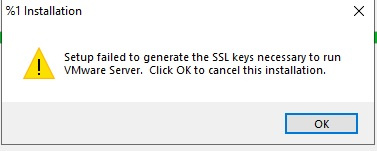
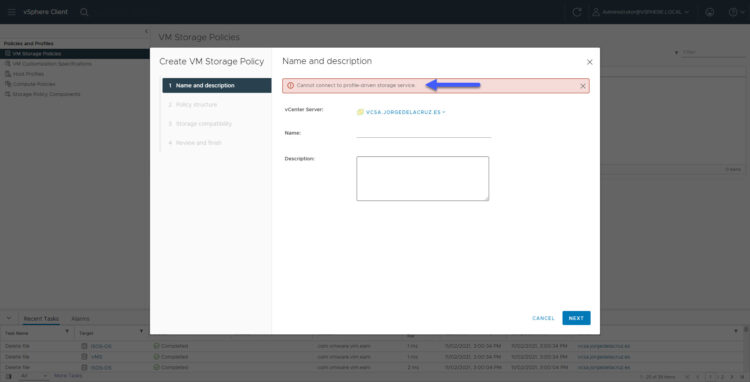



 Note: Rebooting VCSA can take up to 10 minutes.
Note: Rebooting VCSA can take up to 10 minutes.